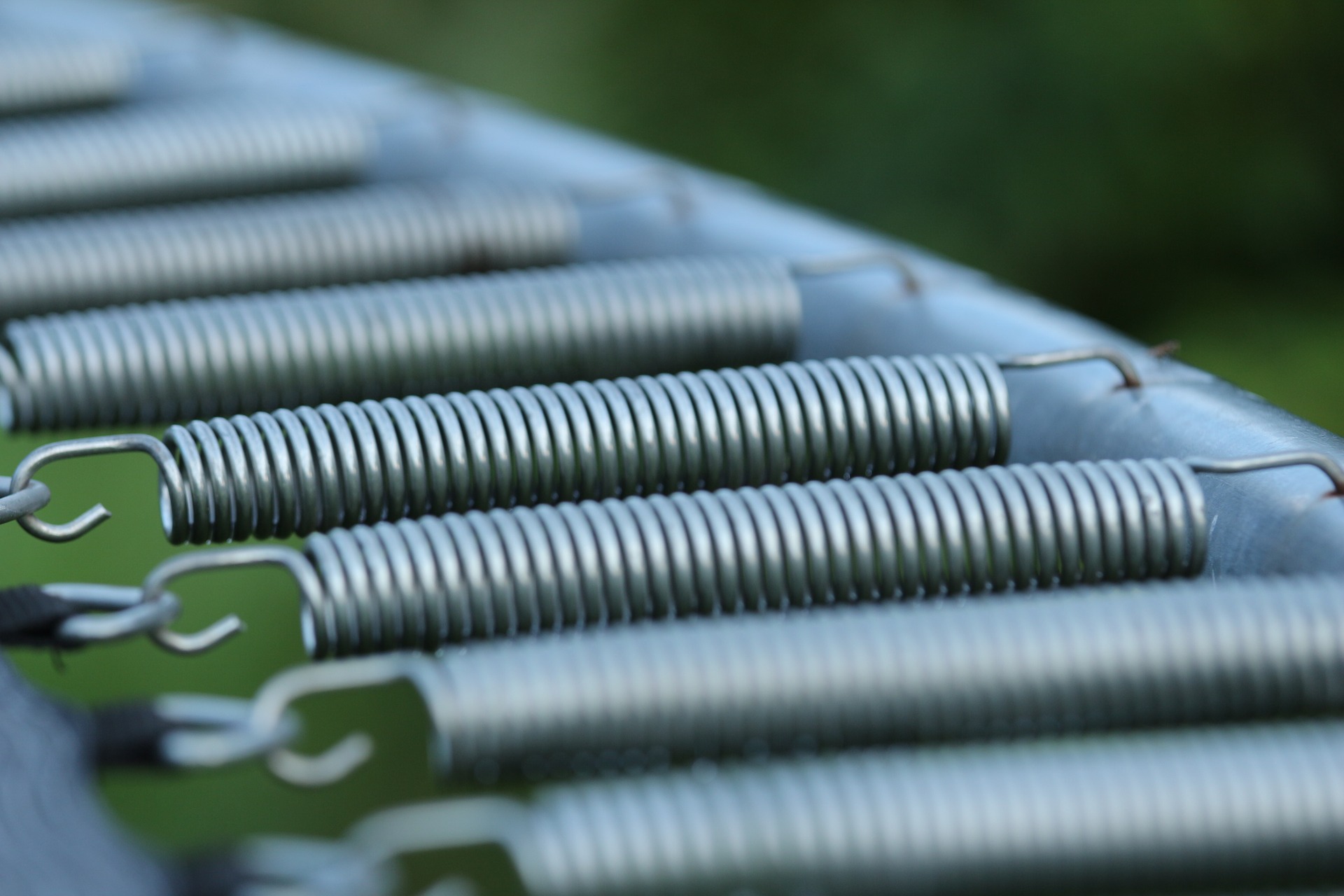All About Extension Springs
In this blog series, All About Springs, we explore some of the most common types of springs, along with their history, uses and manufacturing techniques. This installment focuses on one of the most common types of spring: extension springs.
 If you want to see a prime example of an extension spring, take a look at a trampoline. All around the parameter, attaching the canvas to the frame, are extension springs. When a person (or a dog, or a goat) jumps on the trampoline, they extend the springs. When the springs do what springs do and return back to their original shape, they collectively pull the canvas upwards, bringing the trampoline user with them.
If you want to see a prime example of an extension spring, take a look at a trampoline. All around the parameter, attaching the canvas to the frame, are extension springs. When a person (or a dog, or a goat) jumps on the trampoline, they extend the springs. When the springs do what springs do and return back to their original shape, they collectively pull the canvas upwards, bringing the trampoline user with them.
Like compression springs, extension springs come in helical coils. The main differences are the closeness of the coils, and the ends.
- First, extension springs are usually close wound, meaning that their spring pitch is equal to the wire diameter. In other words, their coils touch one another when they’re in a resting state.
- Next, both ends of extension springs almost always attach to something else. Manufacturers bend the wire to create loops or hooks at both ends of each extension spring. In the trampoline, one loop attaches to the frame and the other attaches to the canvas.
Beyond trampolines, you’ll find extension springs in a wide variety of manufactured products. Remember the screen door that always slams closed? An extension spring is doing the slamming. They’re also used as garage door springs to govern the up and down motion of the overhead doors. If you take apart your washing machine, you’ll find extension springs to help balance the spinning apparatus. The list goes on: extension springs are widely used throughout the automotive industry, farm equipment, toys, electronics and a whole lot more.
Manufacturing Extension Springs
 Before manufacturing extension springs, designers and manufacturers need to work together to determine the important parameters of each spring. In extension springs, designers need to define:
Before manufacturing extension springs, designers and manufacturers need to work together to determine the important parameters of each spring. In extension springs, designers need to define:
- Spring diameter: the size of a circular spring’s cross section
- Free length: the length of the spring when at rest
- Maximum extended length: the farthest the spring can be stretched without damaging or overstressing the spring
- Ends: the loops or hooks at each end of the spring
- Wire diameter: along with material, wire diameter does a lot to determine the behavior of the spring
CNC spring coilers are often capable of producing both compression and extension springs. As mentioned above, the main differences between the two are the spring pitch and the ends. After winding an extension spring to the desired free length, the same coiling machine can often be programmed to bend the wire at each end, forming loops or hooks.
The American standard for spring coiling is to use a single-point coiling system. Single-point coilers are more versatile in terms of the work they can perform, and they’ve also proven to create extension springs with higher initial tension rates.
Learn More
Take a look at these resources for more information on the springs and spring coilers discussed in this blog. Be sure to subscribe so you don’t miss any updates.


